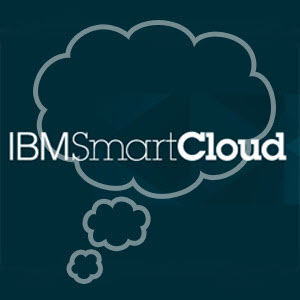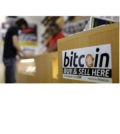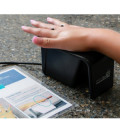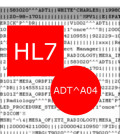Why telehealth has a brighter future than apps
Tamara StClaire is the CIO of Xerox’s Commercial Healthcare unit. She leads the commercial healthcare innovation portfolio and creates new opportunities as well as identifies, incubates and matures partnerships and acquisitions. Prior to this role, she was the chief business officer at PARC, overseeing the Xerox Innovation Group’s commercial activities. She joined PARC in 2009 as vice president of Global Business Development and Head of Commercial Operations.
Q. What’s the one promise of mHealth that will drive the most adoption over the coming year?
A. In a single word, the promise of mHealth is: convenience. Convenience followed closely by affordability.
Consumers can stay up to date with their own health with a simple glance at their phone or watch. And when they need a check-up or a visit with their doctor, they can do so by visiting a pharmacy on their lunch break instead of taking an afternoon off of work to drive to their doctor’s office and sit in a waiting room.
As apps and solutions become more advanced, meaningful and ubiquitous, we will see patients becoming more active and engaged in their own healthcare because it will be convenient and cost-effective for them to do so.
Q. What mHealth technology will become ubiquitous in the next 5 years? Why?A. Telehealth is shaping up to be the future of healthcare. There are a number of forces at play contributing to the perfect storm:
- Consumers expect a more convenient level of healthcare.
- A new era of providers is more comfortable with video-based communication.
- Current regulations emphasize lower costs and increased access to care.
- Health information technology infrastructure helps to create an end-to-end solution that meets patient needs.
- Reimbursement mechanisms have been recently improved due to increased acceptance of telehealth by health insurance companies, Medicare and Medicaid.
A number of companies are already pioneering the telehealth frontier. HealthSpot, a company Xerox recently partnered with, allows patients to interact virtually with a board-certified doctor who can diagnose and provide care for many common ailments in as little as 15 minutes. The service relies on a relatively small station in retail pharmacies with a single attendant. The model lowers overhead costs and makes it feasible for telehealth to meet patient needs.
Q. What’s the most cutting-edge application you’re seeing now? What other innovations might we see in the near future?
A. I find some of the most promising applications in mHealth to be in lifestyle applications and chronic disease management. As regulators become accustomed to new modes of care delivery, the sky will be the limit, particularly in new modes of diagnostics.
Q. What mHealth tool or trend will likely die out or fail?
A. Right now, the mobile application landscape is exploding. It’s great that consumers have so many options available to them, and as an industry it is important to find out what works well and what doesn’t.
[Q&A: Duke’s Ricky Bloomfield, MD on the promise of HealthKit and SMART on FHIR]
But I think many of these apps will eventually fail because they are not truly integrated into the healthcare system. Many are unregulated, and many others do not include a connection to physicians. The end result is a spate of apps that aren’t linked to anything actionable. Those are the ones that I envision being a passing fad.
Q. What mHealth tool or trend has surprised you the most, either with its success or its failure?
A. Positive progress being made in our regulatory bodies has been a pleasant surprise.
The FDA, for example, recently announced it would ease restrictions on mobile apps and medical device data systems – hardware and software used to display data like blood pressure and glucose levels. The FDA acknowledged “the importance they play in advancing digital health.”
On the other hand, CMS has made advances in telehealth regulations. In July, annual wellness visits and psychotherapy began being covered as “category 1 services” and therefore able to be received via telehealth.
Q. What’s your biggest fear about mHealth? Why?
A. Like 51 percent of healthcare executives surveyed by the Economist Intelligence Unit, my biggest fear is in data privacy risks.
Widespread adoption is the key to new healthcare delivery, but consumers need to trust that their data and personal information will be kept secure or they will not support mHealth. Right now, that trust is lacking. In Xerox’s fifth annual EHR survey, we found that 82 percent of respondents had concerns that their personal health information could be stolen by a computer hacker, and 64 percent were apprehensive of their personal information being misused.
Despite the need for increased confidence in the privacy and security of personal health information, transparency is still important. Data needs to be exchanged freely and quickly between providers, payers and consumers.
So transparency and security are two sides of a single coin. Ensuring both simultaneously is crucial.
Q. Who’s going to push mHealth “to the next level” – consumers, providers or some other party?
A. Consumers are taking the driver’s seat in healthcare. For the first time it’s possible and beneficial for patients to be active participants in their own care. The tools, technologies and regulations will all catch up to meet the shift in patient engagement.
Third parties will play a big role in developing the next level. Bringing technology together behind the scenes to connect the provider and the patient efficiently is an important step.
Q. What are you working on now?
A. We are working on providing infrastructure necessary for mHealth entrants to scale and change the way healthcare is delivered. Our partnership with HealthSpot will allow them to scale deployment of their kiosks and in doing so creates a cost-effective and convenient method for the patient to receive high quality care.









You must be logged in to post a comment Login